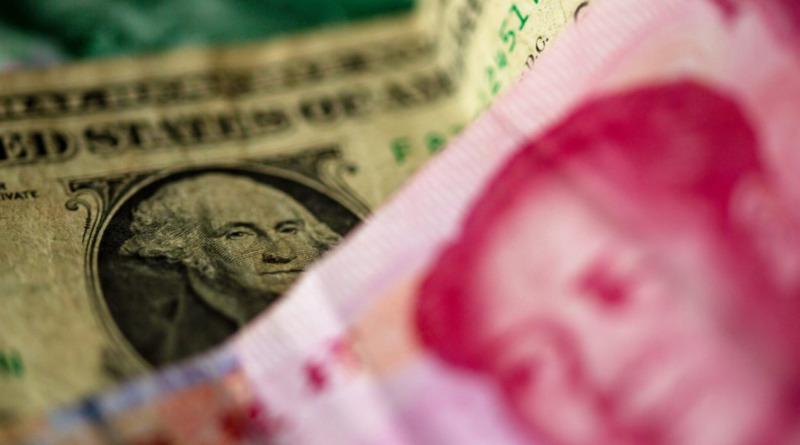The dollar doesn't have quite the pull it used to, S&P's chief economist says
The power of the greenback may be beginning to fade and is being pushed down the global pecking order by the rise of the Chinese yuan, a top economist has warned.
Speaking during an S&P Global Ratings event in London, Paul Gruenwald the rating firm’s chief economist, cautioned that the dollar “doesn’t have quite the pull it used to.”
According to a Reuters report, Gruenwald said he was beginning to see “fragmentation around the edges” of the globally influential currency, adding that “things [are] happening outside of the dollar world.”
Gruenwald’s evidence included the number of transactions now being carried out in yuan—overtaking the dollar for the first time in March to become the most widely used currency for cross-border transactions in China.
Likewise, Gruenwald highlighted banks like the Asia Infrastructure Investment Bank and the New Development Bank—formerly known as the BRICs bank—are ramping up global lending, further putting the Chinese currency front and center.
The Russia problem
Another major issue facing the dollar is Russia.
U.S. economic sanctions imposed on the country for its invasion of Ukraine saw the nation turn to the yuan, also referred to as renminbi.
Since February, the monthly trading volumes on Moscow Exchange were predominantly conducted in yuan instead of dollars, Bloomberg reported, with the two nations also forming closer political ties.
“The U.S. (dollar) will continue to be a leading world currency, (but) it will no longer be the dominant world currency,” Gruenwald added.
The S&P expert isn’t the first to voice this theory.
Last week Paul Krugman, a Nobel Laureate and economist, wrote in the New York Times that “the greenback’s dominance won’t last forever, because nothing does.”
However, he brushed off fears that de-dollarization—the reduction of the dominance of the dollar in global trade and financing activities—is imminent, adding it was “much ado about nothing.”
“For now, the dollar dominates because there just aren’t any good alternatives,” he finished.
Dollar still dominates
According to data from the Federal Reserve, that certainly seems to be the case.
In a June release, the Fed pointed out that over the period of 1999 to 2019, the dollar accounted for 96 percent of trade invoicing in the Americas, 74 percent in the Asia-Pacific region, and 79 percent in the rest of the world.
“While international usage of the Chinese renminbi has increased over the past 20 years [it] remains even behind the Japanese yen and British pound,” it adds.
Weaponization
A major factor working against the dollar is its weaponization against Russia.
Sanctions thus far have included freezing Russia’s ability to use half of its reserves as well as hamstringing its access to the transaction portal SWIFT.
In April, Treasury Secretary Janet Yellen told CNN: “There is a risk when we use financial sanctions that are linked to the role of the dollar that over time it could undermine the hegemony of the dollar.”
Yellen caveated that the dollar is used as a tool “judiciously,” adding: “It is a very effective tool. Of course, it does create a desire on the part of China, of Russia, of Iran to find an alternative.”
As well as the IMF’s First Deputy Managing Director, Gita Gopinath, voicing similar concerns, Tesla CEO Elon Musk is also wary of the impact of weaponizing the currency.
In April the Twitter owner responded to a video claiming “de-dollarization is real and is happening fast.”
The SpaceX founder replied: “If you weaponize currency enough times, other countries will stop using it.”
If you weaponize currency enough times, other countries will stop using it
— Elon Musk (@elonmusk) April 25, 2023
Weaponization or not, other countries are looking into ways to circumnavigate the dollar.
In April, while on a trip to China, Brazilian President Luiz Inacio Lula da Silva asked: “Why should every country have to be tied to the dollar for trade?… Who decided the dollar would be the (world’s) currency?”
Lula da Silva continued: “Why can’t a bank like the BRICS bank have a currency to finance trade between Brazil and China, between Brazil and other BRICS countries?… Today, countries have to chase after dollars to export, when they could be exporting in their own currencies.”



